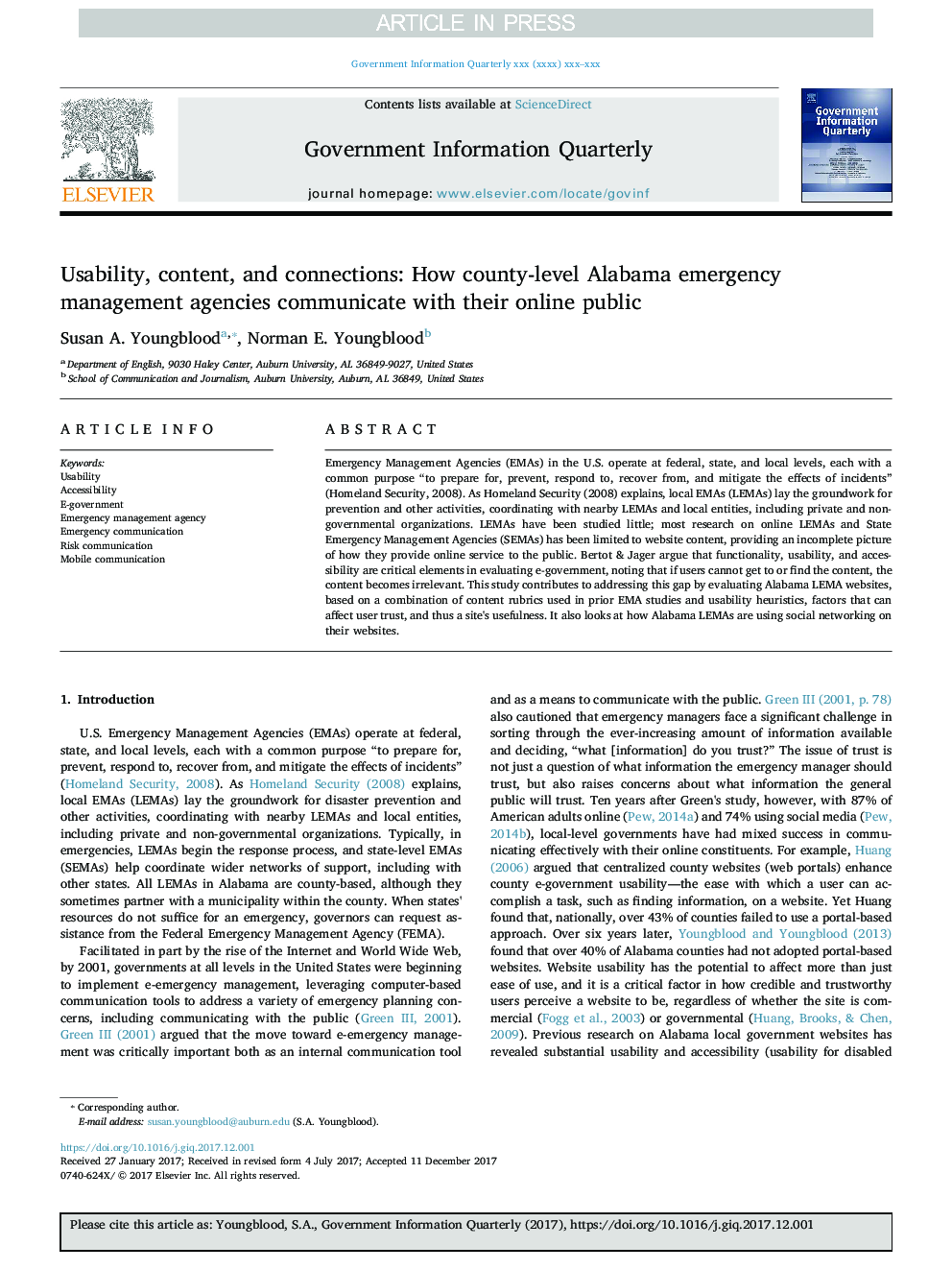| Article ID | Journal | Published Year | Pages | File Type |
|---|---|---|---|---|
| 7428550 | Government Information Quarterly | 2018 | 11 Pages |
Abstract
Emergency Management Agencies (EMAs) in the U.S. operate at federal, state, and local levels, each with a common purpose “to prepare for, prevent, respond to, recover from, and mitigate the effects of incidents” (Homeland Security, 2008). As Homeland Security (2008) explains, local EMAs (LEMAs) lay the groundwork for prevention and other activities, coordinating with nearby LEMAs and local entities, including private and non-governmental organizations. LEMAs have been studied little; most research on online LEMAs and State Emergency Management Agencies (SEMAs) has been limited to website content, providing an incomplete picture of how they provide online service to the public. Bertot & Jager argue that functionality, usability, and accessibility are critical elements in evaluating e-government, noting that if users cannot get to or find the content, the content becomes irrelevant. This study contributes to addressing this gap by evaluating Alabama LEMA websites, based on a combination of content rubrics used in prior EMA studies and usability heuristics, factors that can affect user trust, and thus a site's usefulness. It also looks at how Alabama LEMAs are using social networking on their websites.
Related Topics
Social Sciences and Humanities
Business, Management and Accounting
Business, Management and Accounting (General)
Authors
Susan A. Youngblood, Norman E. Youngblood,
